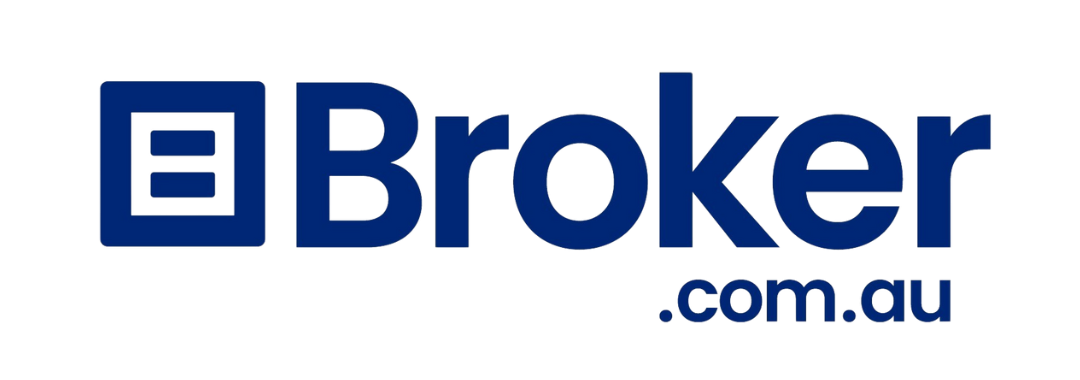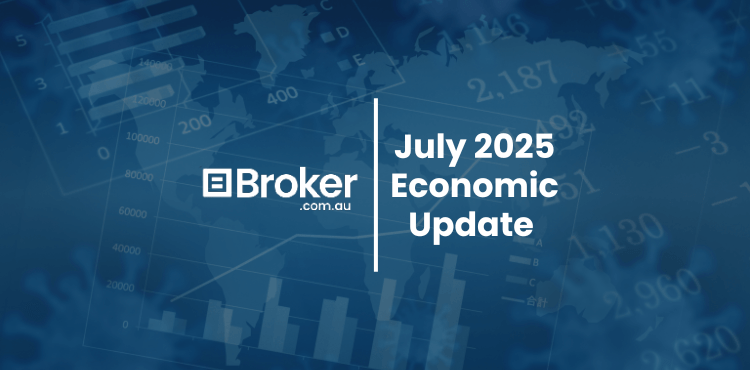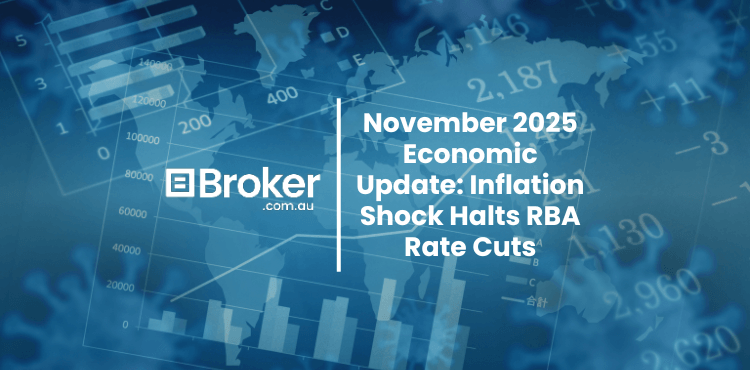In our latest monthly economic wrap, we explore the Reserve Bank of Australia’s surprise move to keep the official cash rate steady at 3.85% following its Board meeting on 8 July 2025. We also examine Australia’s softening inflation trends, renewed attention on global tariffs, and the continued growth in national housing prices.
RBA Holds Rates Despite Widespread Expectations of a Cut
Leading into the July meeting, markets had all but locked in a rate cut, with pricing data suggesting a 96% probability of a reduction. Analysts at ANZ were among those adjusting their forecasts earlier than expected, pulling forward their predicted cut from August to July on the back of weakening consumer spending, declining confidence, and ongoing global economic uncertainty.
With each of the major banks forecasting a cut, the RBA’s decision to maintain the 3.85% cash rate came as a surprise.
So, what changed?
The RBA’s decision appeared rooted in inflation concerns. Specifically, the Board opted to delay any adjustment until after receiving more reliable inflation data — notably the trimmed mean inflation figure for the 12 months to 30 June, due for release on 30 July. Compared to the more volatile monthly CPI, the trimmed mean offers a clearer view of underlying inflationary trends.
May’s monthly CPI rose 2.1%, down from 2.4% in April and below the anticipated 2.3%. The RBA commented in its post-meeting statement that the inflation outlook remains broadly in line with forecasts, with the trimmed mean expected to come in around 2.6%, per Trading Economics projections.
The Board also pointed out that rates are already 50 basis points lower than earlier in the year and that recent economic data aligned with their expectations. Given this, they deemed it prudent to wait for more clarity before making further moves, particularly to ensure inflation is genuinely tracking towards the 2.5% target.
However, former RBA executive and Westpac Chief Economist Luci Ellis warned that this cautious approach might leave the central bank reacting too slowly.
RBA Governor Michelle Bullock countered that the upcoming inflation figures should provide the validation needed for continued easing, while also affirming the RBA’s readiness to respond quickly to any renewed global risks.
The next policy meeting is scheduled for 11–12 August, shortly after the key inflation data is released. At present, markets are pricing in an 85% chance of a 25 basis point cut at that meeting.
With rates steady for now, it could be the right time to review your borrowing options. Start your application with Broker.com.au today
Tariff Pressures Resurface on the Global Stage
Trade tensions are again making headlines, with U.S. President Donald Trump issuing fresh letters to over a dozen world leaders announcing new tariffs. These proposed levies largely mirror the earlier “Liberation Day” tariffs, though some appear intended to spark new negotiations with the U.S.
Australia hasn’t received such a letter yet and remains subject to the existing 10% baseline tariff. However, key trading partners Japan and South Korea have both been notified. South Korea faces a continuation of the 25% tariff, while Japan’s proposed rate has increased from 24% to 25%.
Should these nations be unable to strike trade agreements with the U.S., they may redirect investment away from America. Australia could stand to benefit from this shift in global capital flows.
According to the Productivity Commission’s Trade and Assistance Review 2023–24, the direct long-term impact of these tariffs on Australia is expected to be small but positive. The report suggests that lower-cost imports and redirected capital from higher-tariff regions could boost Australian output — estimating a potential 0.37% increase in GDP.
With rates steady for now, it could be the right time to review your borrowing options. Start your application with Broker.com.au today
Housing Market and Construction Activity Gaining Momentum
Home values across Australia continued their upward trend in June, with the Cotality Home Value Index posting a 0.6% monthly rise — the strongest since June 2024. This growth is largely attributed to growing confidence in the prospect of falling interest rates.
Perth led the way with a 0.8% increase, followed by Brisbane (0.7%), Sydney (0.6%), and both Adelaide and Melbourne (0.5%).
Building approvals also trended higher. Private house approvals rose 0.5% in June — following a 5.9% surge in April, the largest monthly gain since early 2021. Overall dwelling approvals were up 3.2% in May, rebounding from April’s 4.1% decline and marking the first positive reading since January.
Signs of resilience are beginning to show across various sectors of the Australian economy, both domestically and through global shifts. At Broker.com.au, we’re continuing to invest in advanced technology and expand our client service capacity — all to ensure we deliver the best possible outcomes for our borrowers.
Stay ahead of market changes and secure the right finance solution for your needs. Get started with Broker.com.au today




